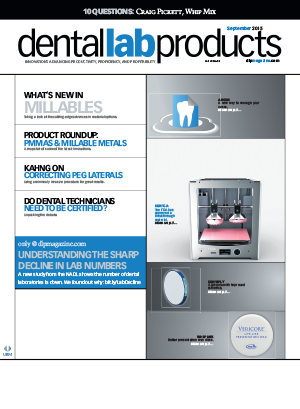Step-by-step: Saving time on implant fabrications
Like most business owners, I am always looking to find multiple uses for products I use around the laboratory. The goal is to consolidate product purchases and at the same time provide quick, consistent, quality results.
Like most business owners, I am always looking to find multiple uses for products I use around the laboratory. The goal is to consolidate product purchases and at the same time provide quick, consistent, quality results.
The last time I mentioned Dental Creations’ Wonderfill and Wonderformer (Fig. 1; all figures in video below) in an article was when I recommended them for boxing conventional denture impressions. Since then, I have found another excellent use for the products involving implant prosthetic fabrication.
Step-by-step with Zaleske: Making processed baseplates more efficient
Like most laboratories, in the last five years I have experienced an increase in fabricating hybrid, wrap around and all-on-four cases in my lab. As with other fabrications we produce, we investigate and discover different ways to reduce labor time and lower material costs without sacrificing quality.
01 When processing wax try-in approved bar cases, I always fabricate a “processing model” in order to preserve the master tissue model for final fit and finish. Key to that model fabrication is the preservation and duplication of the cleansable contours established in wax (Fig. 2).
02 In the past, part of the processing model fabrication involved placing analogs on the bar and forming laboratory putty around the tissue side and analogs (Fig. 3) to preserve the cleansable contours carved and smoothing in wax around the implant interface before pouring the stone base to that (Fig. 4).
03 This involved a precise adaption technique to avoid the putty from pulling away from the analogs or wax and to avoid making creases in the material.
04 One day, I had an “aha” moment and reached for my Wonderfill and Wonderformer. I reasoned that by submerging the tooth side of the setup down into the Wonderfill and leaving only the tissue bearing and analog side exposed (Fig. 5), I would be able to pour a perfectly adapted “one step” model to the wax and analogs without the typical worry and expense with lab putty.
05 Gravity, an inverted pour and a good wetting agent assures a well-adapted stone replicated processing surface (Figs. 6 & 7). Processing model fabrication is now inexpensive, fast, easy and accurate
ACTIVA BioACTIVE Bulk Flow Marks Pulpdent’s First Major Product Release in 4 Years
December 12th 2024Next-generation bulk-fill dental restorative raises the standard of care for bulk-fill procedures by providing natural remineralization support, while also overcoming current bulk-fill limitations.
